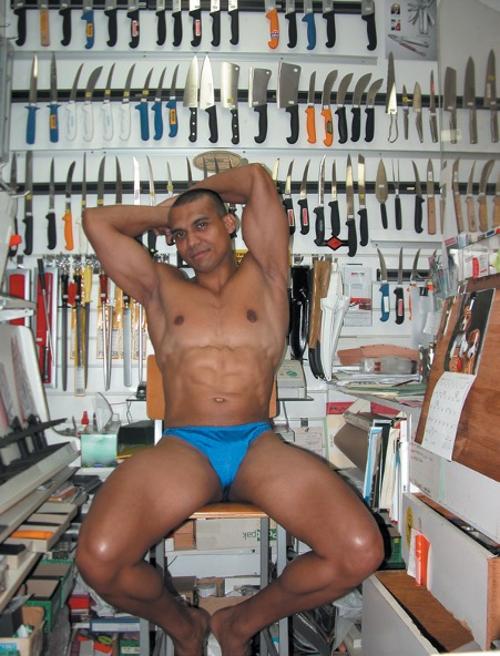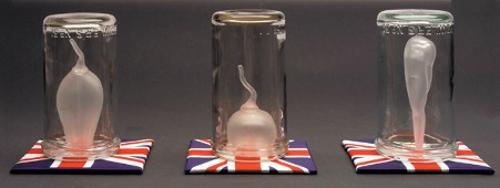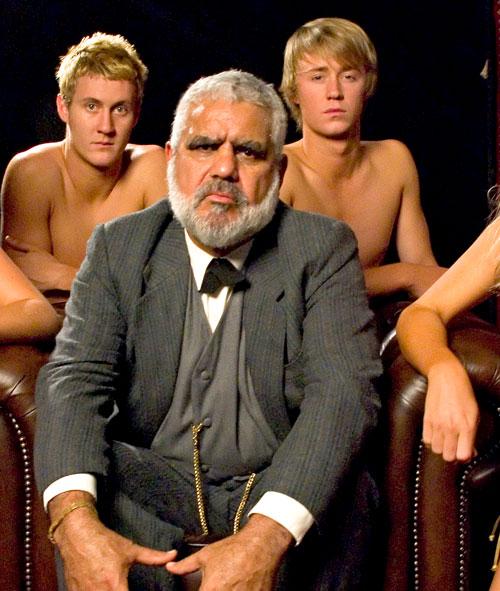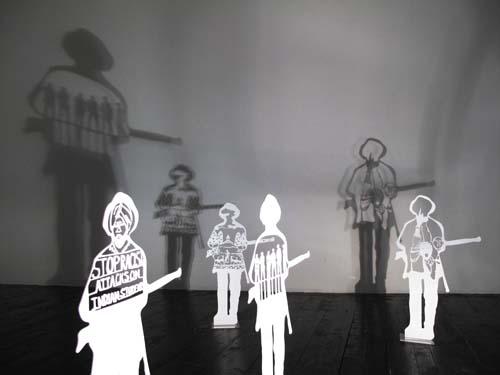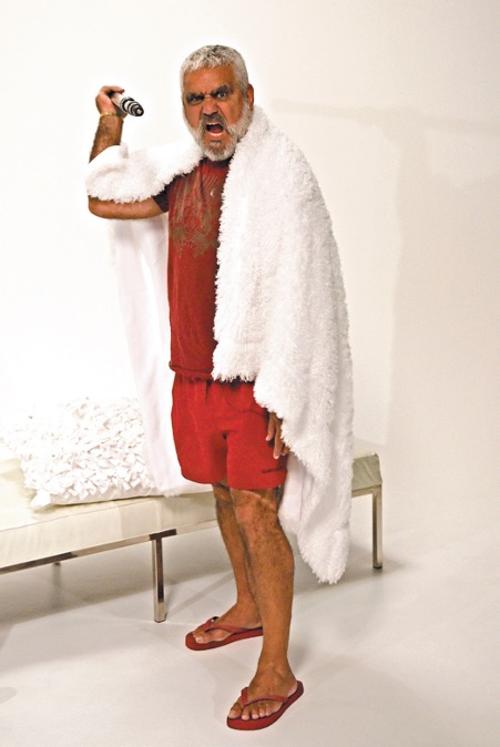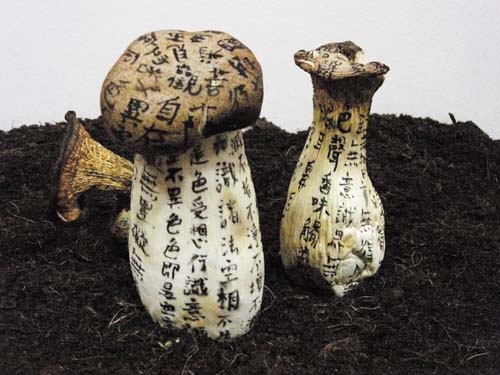
At the end of the modest, day-long seminar presented in conjunction with the opening of this year's 'Asia Pacific Triennial (APT)', a panel of artists from APTs past and present was asked to assess the current one. Indonesian-born Dadang Christanto, whose fragile woven cane monument to victims of political oppression was a highlight of the inaugural exhibition in 1993, commented that marginalised artists, who made that first show so distinctive, are now being excluded.
One reason for this is the immense effort and expense that was required in the early 1990s to build up a network of contacts beyond the known art world, so that the real scope of thriving contemporary art practices in countries such as Vietnam and Papua New Guinea could be encountered by Australians. (You can save a lot of money by simply ringing up dealers in Hong Kong and New York and asking them to email images.) Another reason is that in geographic terms to get beyond the known art world these days you have to go further and further. This year the inclusion zone goes as far as North Korea.
The Queensland Art Gallery previously referred to the event as the 'Asia-Pacific Triennial', but this year the hyphen has been discreetly dropped from the title. The representation of India in 1996 opened the way for the inclusion in 1999 of artists from other Asian countries not on the Pacific Ocean. This time around, the Asian but non-Pacific nation of Cambodia has been added, greatly enriching the exhibition with fine works that are variously elegant, funny and shocking.
This subtle geographic realignment has transformed the APT into what should really now be called the 'Asia and Pacific Triennial'. This year the APT includes artists from Turkey, which straddles the divide between Europe and Asia, and from Iran. The redrawn boundaries presumably also encompass Russia, as well as countries in North and South America that have a Pacific coast. This isn’t exactly what we had in mind back in 1993 when we started thinking of the Asia-Pacific area as the fastest growing region in the world.
The resounding success of the APT has led it from regionalism to expansionism. Perhaps the very idea of regionalism is now outdated. We live in an age when geography, like history, is being dissolved by the simultaneous availability of everything everywhere. The APT was quick to acknowledge that culture and location are not necessarily connected, and Caroline Turner, the original creator of the project, for APT3 in 1999 introduced a section (Crossing Borders) for artists who think locally but act globally.
The 2006 APT (a particularly whiz-bang and glamorous affair) aroused suspicions that we didn’t have long to wait before Brisbane’s Triennial would become as generic as its counterparts elsewhere on the TriBi circuit, where the same global brand artists are constantly doing the rounds.
It seems to me, however, that APT6 has in fact made an imaginative and interesting attempt to reverse this tendency and be true to its roots. This time there are no international heavyweights like Yayoi Kusama, Lee Ufan or Anish Kapoor (unless you count Tracey Moffatt, who lives and works on the tiny Pacific island of Manhattan). The aesthetic principle that art is above politics, which had begun to cast its soothing spell over the APT, is resisted as strongly in the current exhibition as it was by some of the Indonesian contingent in 1993, but in rather different ways. The exhibition declares its independence from the London-New York axis by courageously introducing (to the embarrassment of our Department of Foreign Affairs) artists most of us have never heard of from George W. Bush’s Axis of Evil.
The APT’s ongoing erasure of national boundaries has been accomplished by representing some regions more broadly (and in fact, more logically). The Mekong Project is a good example. 'The Pacific Reggae' component of the Triennial is a reminder that before TV and video, the Pacific basin was criss-crossed for centuries with cultural links made possible by international canoe travel.
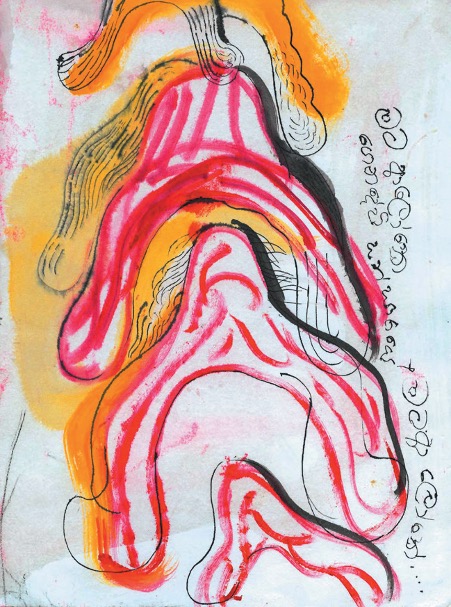
An endearing aspect of the APT has always been its ability to make viewers occasionally forget that they’re supposed to be looking at art, and instead indulge in child-like wonder at the objects and installations on display. We in Brisbane are very proud that our state gallery has the best kids’ programs in the country, but misgivings are sometimes expressed about the risk of the APT becoming one of them. Hardened art theorists take a dim view of works that are nothing more than engaging but vapid spectacles, and at first glance APT6 seems to include some delightful examples.
Japanese artist Kohei Nawa’s 'PixCell-Elk#2', a taxidermied specimen encrusted with clear refractive spheres, provides visitors with a memorable, dream-like encounter. But those for whom sheer beauty is not enough will eventually recognise it as a strange and poignant elegy for what we used to think of as nature. South Korean artist Kibong Rhee’s artificial willow tree slowly rotating in a room filled with artificial fog could be viewed the same way.
As is often the case with contemporary art from outside the Western mainstream, some of the exhibits in this show may seem oddly remote from a Western viewer’s interests, but have a strong resonance in their local context. This is particularly true of the North Korean component, and some of the Iranian exhibits. The huge mosaic 'Work team contest' by Kim Hung Il and Kang Yong Sam is a genuinely astonishing tour de force. It reveals that North Korea’s official artists bring to their work the same relentless vigour and precision that the North Korean army brings to marching. The sheer incongruity of this technical marvel is startling in an exhibition comprised primarily of what we have come to think of as normal contemporary art - stuff like miniature calligraphy on mushrooms (by Taiwanese artist Charwei Tsai) and an old Kombi van packed to overflowing with junk (by the Japanese group YNG). Likewise the mirror mosaic by Iranian artist Monir Shahroudy Farmanfarmaian, which would look right at home in a Dubai hotel lobby, acquires a whole new level of cultural exoticism in a Western contemporary art museum.
Whatever else this exhibition achieves in terms of aesthetic adventures and cultural tourism, it envisages a world where what we often think of as the mainstream is actually just a tributary.


